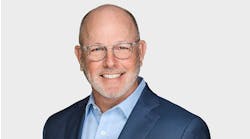California Collaborative Pays Community Pharmacists for Chronic Disease Care
The California Right Meds Collaborative (CRMC) began in 2019 as a pilot project between the School of Pharmacy at the University of Southern California and L.A. Care Health Plan. It trains community pharmacists to provide clinical services to patients who have uncontrolled diabetes and high blood pressure. Four more payers have since joined the effort. Healthcare Innovation recently spoke with its pharmacist leaders about the project’s success.
Alex Kang, PharmD, is director of clinical pharmacy for L.A. Care Health Plan, which serves more than 2.7 million members in Los Angeles County, making it the largest publicly operated health plan in the country. Steve Chen, PharmD, is associate dean for clinical affairs in the School of Pharmacy and a professor of clinical pharmacy at USC.
In our interview, they spoke about setting up a pharmacist-led effort that is decreasing healthcare costs, and reducing unnecessary hospitalizations, particularly in under-resourced communities.
First, they briefly described how the program works: CRMC trains pharmacists to provide clinical services to patients who have uncontrolled diabetes and high blood pressure. L.A. Care members referred into the program meet regularly with their pharmacist, either in-person or via telehealth. The pharmacists provide individualized care plans for each member that includes, but is not limited to, medication therapy recommendations, disease state education, and extensive monitoring for drug safety. All pharmacist recommendations are promptly provided to the member’s healthcare team to improve timeliness of patient care.
They have been able to show impressive results. For members who had five or more visits with their pharmacist:
• the average decrease in blood pressure was 5/1.7 mmHg
• the average decrease in systolic blood pressure for patients with BP>140/90 at baseline was -34 mmHg
• statin use increased for those whom statins were clinically indicated
• the average HbA1c value decreased by 3.3 percent
HCI: Could you describe some of the challenges in the communities you serve that this program is working to address, both in terms of patient needs and provider shortages? Was there a sense that pharmacists were being underutilized in the fight against chronic illnesses?
Kang: During COVID, when everyone was staying home and it often wasn't possible to go see a provider, we had to take up new ideas. Telehealth was a big part of this, but it's not just any telehealth — it's telehealth using the pharmacist. We all know about the primary care physician shortage. The shortage is even worse in some of the areas we serve. But we do have pharmacies on almost every block. So why not utilize the training these pharmacists have to supplement what the PCP could do?
Chen: When we put a pharmacist in this space, we identified that patients are not receiving the optimal choice of medication, the right dose of medication, or in some cases or not even being treated for chronic conditions that they're diagnosed with. It happens more often than you might think. In fact, when we collected data about this, we found the average patient that gets enrolled in this program probably has about 10 to 11 medication-related problems each that needed to resolved. We approached Alex two years ago with work that we had done with a large grant from the government and said, ‘Is this the kind of work that could be helpful for your patients?’ and his response was ‘Absolutely, but we don't own clinics.’ So together we thought, well, let's try our community pharmacies. They're local and trusted; they have staff that speak the language. Our vision is that these pharmacies need to become high-impact hubs for health and social services. That's really what we're grooming through this collaborative.
HCI: My impression is that the small, independent pharmacies have been struggling financially and the big chains such as CVS and Rite Aid have been growing. Do you have to get them involved to make this work?
Chen: It is a great question, because we don't have any chains as a part of our collaborative. It's not because we didn't try to reach out, but it's complicated to get a chain pharmacy to participate in something like this. Do we need to engage them? I think the question is the other way around. Should they be engaging in this more? Let's face it, the practice of pharmacy in the community is being forced to evolve and really needs to evolve anyway. The good news is that there are many top clinical pharmacy leaders now working for these chains who are looking at how to retool the system from mainly a dispensing-focused entity to one where we're actually providing high-value services that health plans and payers value.
HCI: The pharmacists in this project received training as part of this program. Is it training about diabetes or hypertension, or is it more about how to engage with the patients at a deeper level or in the use of telehealth, too?
Chen: What I tell our pharmacists is that if you don't feel like you are half a social worker, you're not doing the job. The training is everything from disease-specific medication therapy management to patient engagement, motivational interviewing, and shared decision making. Alex's team was fantastic in bringing in their social determinants of health experts to talk about the resources that L.A. Care provides and how our pharmacies can connect patients to those resources. In that grant project I've mentioned previously, we refined a remote telehealth care process for administering this kind of program.
HCI: Is some of that training in things that are typically not part of the PharmD curriculum?
Chen: The doctor of pharmacy degree entails very heavy clinical training. We train side by side with all the other members of the care team. Obviously, our focus is on drug therapy optimization, but the clinical element is not new to these pharmacists. But they did need a little refresher to get them up to speed on current guidelines, current evidence for each of these chronic conditions. But I would have to say that there's a mix in the pharmacy schools as to how much management of social needs — whole person care — is emphasized in schools. All of our curriculums have shifted to include an element of telehealth. But I think what we gave our participants in this collaborative in terms of training and telehealth is really beyond what most schools would offer.
HCI: I understand that five health plans are now participating in the program. Who are the other health plans besides L.A. Care that are taking part?
Chen: Inland Empire Health Plan has also been a long-standing partner. They started with an asthma pilot, but are now branching out as to other high-risk patient populations. SCAN Group. They have a subsidiary called Healthcare in Action that does street medicine. One of our pharmacies is working closely with them on developing a model of medication distribution, as well as figuring out how can the pharmacy serve as sort of a pharmacy home for the homeless population that's proximal to those pharmacies. And then a couple that we're working on moving this year are Health Net and Blue Shield.
HCI: Are there changes coming from Cal-AIM, the Medicaid transformation initiative, that might have an impact on this work?
Kang: The reason we started this program was to supplement what Cal-AIM is doing, but also because we're just trying to find different ways to reach out to the patient. Cal-AIM just started, and it took a while to launch. We just wanted to try to do something that was quicker and faster, a little more nimble for us on the pharmacy side.
HCI: Is this program sustainable financially for the health plans and pharmacies or does it require some grant funding?
Chen: When I reached out to Alex initially, we both committed to the idea that we didn't want to start something that couldn't be self-sustaining. Furthermore, we wanted to minimize risk to the payers. We went into this deciding that we would make this a value-based program, minimizing risk and shifting it to the pharmacies, and for that reason, we believe it is sustainable.
Kang: The value-based component is very big. Good results have to happen for pharmacies to get the full payment. The majority of the payment happens when the patient succeeds in getting their hypertension lowered, so it's value-based. I'm not just throwing money into it hoping that something happens.
HCI: We write about value-based care programs a lot and there can be challenges with sharing the data with providers and getting them to agree about the data.
Chen: That's our job. We bring in our data platform partner Arine to aggregate the data in a single platform. We work with that partner to refine how we want the continuous quality improvement report card to look. It's a very granular process. The program tells us in real time how well the teams are doing, and we want them to succeed. We want them to get that value-based payment, but in a very short amount of time, we know who's not going to make it and we remove them from the program. I think Alex likes that because he doesn't want to pay anybody who is not really generating results, and the pharmacies feel like they know they have to perform to stay in it, and it's important to them.


